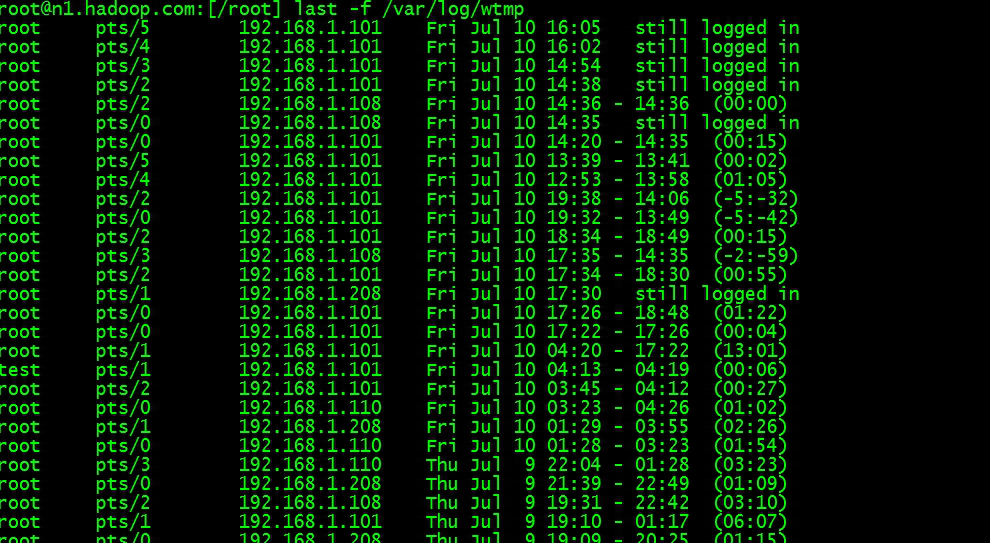以上一节为蓝本,这里增加一点难度,添加了四个节点,增加键盘控制移动速度,使用bool变量控制是否移动。
第一,要增加键盘控制,那就使用OIS::KeyListener,在监听器里添加一个父类KeyListener,添加成员变量并初始化
其中构造函数的ExampleFrameListener(win,cam,true,false);第三个参数改为true,表示使用带缓冲的键盘输入。
1 MoveDemoListener(RenderWindow *win,Camera *cam,SceneNode *sn,Entity *ent,std::deque
2 :ExampleFrameListener(win,cam,true,false),mNode(sn),mEntity(ent),mWalkList(walk)
3 {
4 mWalkSpeed = 0.0f;//行走 速度设为每秒 35 个单位
5 mDirection = Vector3::ZERO;//可用来判断机器人是否正在行走
6 mMove = 10;
7 mContinue = true;
8 mKeyboard->setEventCallback(this);
9 mWalking = false;
10 }
11
12 bool mWalking;//是否在移动
13 Real mMove;// + - 移动常量
14 bool mContinue;//是否继续渲染
第二,添加键盘相应事件,很简单,这两个都是虚函数,必须实现,在构造函数里添加 mKeyboard->setEventCallback(this);相应键盘事件
1 bool keyPressed(const OIS::KeyEvent &e)//
2 {
3 switch(e.key)
4 {
5 case OIS::KC_ESCAPE:
6 mContinue = false;
7 break;
8 case OIS::KC_ADD://移动速度+10
9 mWalkSpeed += mMove;
10 break;
11 case OIS::KC_MINUS://移动速度-10
12 mWalkSpeed -= mMove;
13 break;
14 default:
15 break;
16 }
17 return true;
18 }
19 bool keyReleased(const OIS::KeyEvent &e)//
20 {
21 return true;
22 }
第三,是否移动的结果有mWalklist是否为空决定,不空为ture,空为false,代码操作如下:
1 bool nextLocation()
2 {
3 if (mWalkList.empty())
4 {
5 mWalking = false;//不动
6 return false;
7 }
8 mDestination = mWalkList.front(); //获取第一个元素
9 mWalkList.pop_front(); //弹出一个元素
10 mDirection = mDestination - mNode->getPosition();//计算距离
11 mDistance = mDirection.normalise();//转换为单位向量
12 mWalking = true;//开始移动
13 return true;
14 }
第四,在frameStarted()里捕获键盘,还有一些其他的更改,关键操作啊,看仔细了
1 bool frameStarted(const FrameEvent &evt)
2 {
3 mKeyboard->capture();
4
5 // if (mDirection == Vector3::ZERO)
6 // {
7 if (!mWalking)//第一次判断是否在走动,如果没有walk,就激活
8 {
9 if (nextLocation())//如果行走列表不为空
10 {
11 // 设置行走的动画
12 mAnimationState = mEntity->getAnimationState("Walk");//设置动画为走动
13 mAnimationState->setLoop(true);//循环执行
14 mAnimationState->setEnabled(true);//激活
15 }
16 }
17 // }
18 else if (mWalking)//如果正在移动,接着判断
19 //开始 移动
20 {
21 Real move = mWalkSpeed * evt.timeSinceLastFrame;//速度*时间 = 移动距离
22 mDistance -= move;//更新距离
23 if (mDistance <&#61; 0.0f)//小于0&#xff0c;说明已经走过目标地点.
24 {
25 mNode->setPosition(mDestination);//重新设置为目的地
26 //mDirection &#61; Vector3::ZERO;//方向为0&#xff0c;不走
27 if (! nextLocation())//如果行走列表为空&#xff0c;没有目的地&#xff0c;结束
28 {
29 mAnimationState &#61; mEntity->getAnimationState("Die");//死亡动画
30 mAnimationState->setLoop(false);//设置循环
31 mAnimationState->setEnabled(true);//激活
32 }
33 else //继续走
34 {
35 Vector3 src &#61; mNode->getOrientation() * Vector3::UNIT_X;//获取实体的当前朝向&#xff0c;这里有向量的乘积&#xff0c;如果俩个向量方向相反&#xff0c;乘积就是-1
36 if ((1.0f &#43; src.dotProduct(mDirection)) <0.0001f)//如果要旋转180度
37 {
38 mNode->yaw(Degree(180));
39 }
40 else//如果不是要旋转180度
41 {
42 Ogre::Quaternion quat &#61; src.getRotationTo(mDirection);//获取方向
43 mNode->rotate(quat,Node::TS_LOCAL);//旋转
44 } // else
45 }
46 }
47 else
48 {
49 mNode->translate(mDirection * move);//移动一定距离
50 } // else
51 } // if
52
53 mAnimationState->addTime(evt.timeSinceLastFrame);//更新动画状态
54 //return ExampleFrameListener::frameStarted(evt);
55 return mContinue;//这里接受的是键盘传过来的数据&#xff0c;为false时&#xff0c;退出程序
56 }
第五&#xff0c;就是创建场景&#xff0c;这里增加了一个节点&#xff0c;组成一个正方形&#xff0c;&#xff0c;从一角出发&#xff0c;走一圈回来&#xff0c;然后就挂了&#xff08;Die&#xff09;--死亡动画。
1 void createScene(void)
2 {
3 mSceneMgr->setAmbientLight( ColourValue( 1.0f, 1.0f, 1.0f ) );
4 mEntity &#61; mSceneMgr->createEntity( "robot", "robot.mesh" );
5 mNode &#61; mSceneMgr->getRootSceneNode( )->createChildSceneNode( "NinjaNode", Vector3( 0.0f, 0.0f, 0.0f ) );
6 mNode->attachObject( mEntity );
7
8 //添加行走节点&#xff0c;这是一个正方形
9 mWalkList.push_back( Vector3( 500.0f, 0.0f, 0.0f ));
10 mWalkList.push_back( Vector3(500.0f, 0.0f,-500.0f ));
11 mWalkList.push_back( Vector3(0.0f, 0.0f,-500.0f ));
12 mWalkList.push_back( Vector3(0,0,0));
13
14 Entity *ent;
15 SceneNode *node;
16 ent &#61; mSceneMgr->createEntity( "Knot1", "ogrehead.mesh" );
17 node &#61; mSceneMgr->getRootSceneNode( )->createChildSceneNode( "Knot1Node",Vector3( 0.0f, 0.0f, 0.0f ) );
18 node->attachObject( ent );
19 node->setScale( 0.51f, 0.51f, 0.51f );//缩小
20
21 ent &#61; mSceneMgr->createEntity( "Knot2", "ogrehead.mesh" );
22 node &#61; mSceneMgr->getRootSceneNode( )->createChildSceneNode( "Knot2Node",Vector3( 500.0f, 0.0f, 0.0f ) );
23 node->attachObject( ent );
24 node->setScale( 0.51f, 0.51f, 0.51f );//缩小
25
26 ent &#61; mSceneMgr->createEntity( "Knot3", "ogrehead.mesh" );
27 node &#61; mSceneMgr->getRootSceneNode( )->createChildSceneNode( "Knot3Node",Vector3(500.0f, 0.0f,-500.0f ) );
28 node->attachObject( ent );
29 node->setScale( 0.51f, 0.51f, 0.51f );//缩小
30
31 ent &#61; mSceneMgr->createEntity( "Knot4", "ogrehead.mesh" );
32 node &#61; mSceneMgr->getRootSceneNode( )->createChildSceneNode( "Knot4Node",Vector3(0.0f,0.0f,-500.0f ) );
33 node->attachObject( ent );
34 node->setScale( 0.51f, 0.51f, 0.51f );//缩小
35
36 mCamera->setPosition(150.0f, 450.0f,450.0f );
37 mCamera->pitch( Degree(-45.0f) );
38 mCamera->yaw( Degree(-15.0f) );
39
40 }
好了&#xff0c;看截图了

简单就这样了&#xff0c;好好学习&#xff0c;天天向上。
2013-9-22
升级版&#xff1a;
这里再进一步学习&#xff0c;使用list&#xff08;循环链表&#xff09;可以使机器人不停的移动。
更改如下&#xff0c;将所有的deque替换成list
然后在类MoveDemoListener中添加一行代码&#xff0c;如下&#xff1a;
1 bool nextLocation()
2 {
3 if (mWalkList.empty())
4 {
5 mWalking &#61; false;//不动
6 return false;
7 }
8 mDestination &#61; mWalkList.front(); //
9 mWalkList.pop_front(); //
10 mWalkList.push_back(mDestination);//这一行是新增加的&#xff0c;每次取出一个点后&#xff0c;就将其添加到链表末尾
11 mDirection &#61; mDestination - mNode->getPosition();
12 mDistance &#61; mDirection.normalise();
13 mWalking &#61; true;//开始移动
14 return true;
15 }
这样&#xff0c;robot就可以绕着方块一直走了。其他的代码保持原样。







 京公网安备 11010802041100号
京公网安备 11010802041100号